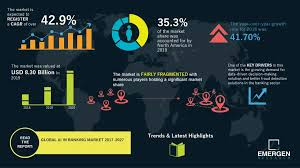Changing Expectations

In 2018, 76% of senior banking leaders believed AI would be critical for market differentiation.
Early predictions were dramatic, with some suggesting AI could replace half of bank staff.
The actual impact is turning out to be more nuanced and less disruptive than initially feared.

Primary AI Applications in Banking
Customer service improvement
Personalized recommendations based on payment history
Chatbots for handling common customer queries
Seamless handover to human representatives when needed
Optimizing cash flow management
Helping less tech-savvy customers navigate digital banking services

Key Challenges in AI Adoption
Integrating AI with existing legacy banking systems
Accessing and leveraging existing customer data
Avoiding creation of new technological silos
Ensuring smooth, frictionless customer experiences
Innovative Approach Example
The article highlights Auriga’s WinWebServer (WWS) AI module as an innovative solution that:

Seamlessly integrates with legacy systems.
Enables enhanced customer experiences
Speeds up strategic decision-making
Helps optimize cash management across bank branches and ATMs
Subtle but Significant Impact

Rather than replacing human workers, AI is primarily being used to augment and improve banking services, making them more personalized, efficient, and accessible.
The article suggests that AI in banking is less about disruption and more about incremental, strategic improvements to existing banking processes and customer interactions.RetryCanalyse ai as transformation not disruptionEditI’ll provide an analysis of AI as a transformative force in banking, expanding on the themes from the article and drawing insights about how AI is fundamentally reshaping the banking landscape.
AI: A Transformative Force in Banking
Conceptual Shift: From Disruption to Transformation
AI represents a fundamental transformation of banking, not merely a disruptive technology. This transformation is characterized by:
1. Intelligent Personalization
- Beyond traditional customer segmentation
- Real-time, individual-level personalization of financial services
- Predictive understanding of customer needs before they arise
- Customized financial advice and product recommendations tailored to individual financial behaviors and life stages

2. Operational Intelligence
- Reimagining banking processes through cognitive automation
- Moving from rule-based systems to adaptive learning systems
- Continuous optimization of internal operations
- Predictive maintenance of financial infrastructure
- Dynamic risk management and compliance monitoring
3. Customer Experience Reimagined

- Shift from transactional interactions to contextual, anticipatory engagement
- 24/7 intelligent support systems
- Seamless omnichannel experiences
- Proactive financial guidance
- Accessibility-driven design that serves diverse customer capabilities
4. Strategic Decision Making
- AI as a strategic partner in executive decision-making
- Advanced scenario modeling
- Real-time market trend analysis
- Enhanced predictive capabilities for investment and risk strategies
- Democratization of sophisticated financial insights

5. Ethical and Inclusive Innovation
- Using AI to address historical banking inequities
- Creating more transparent and fair financial assessment models
- Developing inclusive financial products
- Reducing human bias in financial decision-making
- Supporting underserved financial populations through intelligent design
Transformation Characteristics

- Evolutionary, Not Revolutionary: Gradual integration that builds upon existing systems
- Augmentative Intelligence: Enhancing human capabilities, not replacing them
- Adaptive Learning: Continuous improvement through sophisticated machine learning
- Holistic Approach: Addressing multiple banking dimensions simultaneously
Future Outlook
The true power of AI in banking lies not in replacing human workers but in creating a symbiotic ecosystem where technological intelligence and human expertise collaborate to deliver unprecedented value.

Maxthon
Maxthon has set out on an ambitious journey aimed at significantly bolstering the security of web applications, fueled by a resolute commitment to safeguarding users and their confidential data. At the heart of this initiative lies a collection of sophisticated encryption protocols, which act as a robust barrier for the information exchanged between individuals and various online services. Every interaction—be it the sharing of passwords or personal information—is protected within these encrypted channels, effectively preventing unauthorised access attempts from intruders.
Maxthon private browser for online privacyThis meticulous emphasis on encryption marks merely the initial phase of Maxthon’s extensive security framework. Acknowledging that cyber threats are constantly evolving, Maxthon adopts a forward-thinking approach to user protection. The browser is engineered to adapt to emerging challenges, incorporating regular updates that promptly address any vulnerabilities that may surface. Users are strongly encouraged to activate automatic updates as part of their cybersecurity regimen, ensuring they can seamlessly take advantage of the latest fixes without any hassle.
In today’s rapidly changing digital environment, Maxthon’s unwavering commitment to ongoing security enhancement signifies not only its responsibility toward users but also its firm dedication to nurturing trust in online engagements. With each new update rolled out, users can navigate the web with peace of mind, assured that their information is continuously safeguarded against ever-emerging threats lurking in cyberspace.

